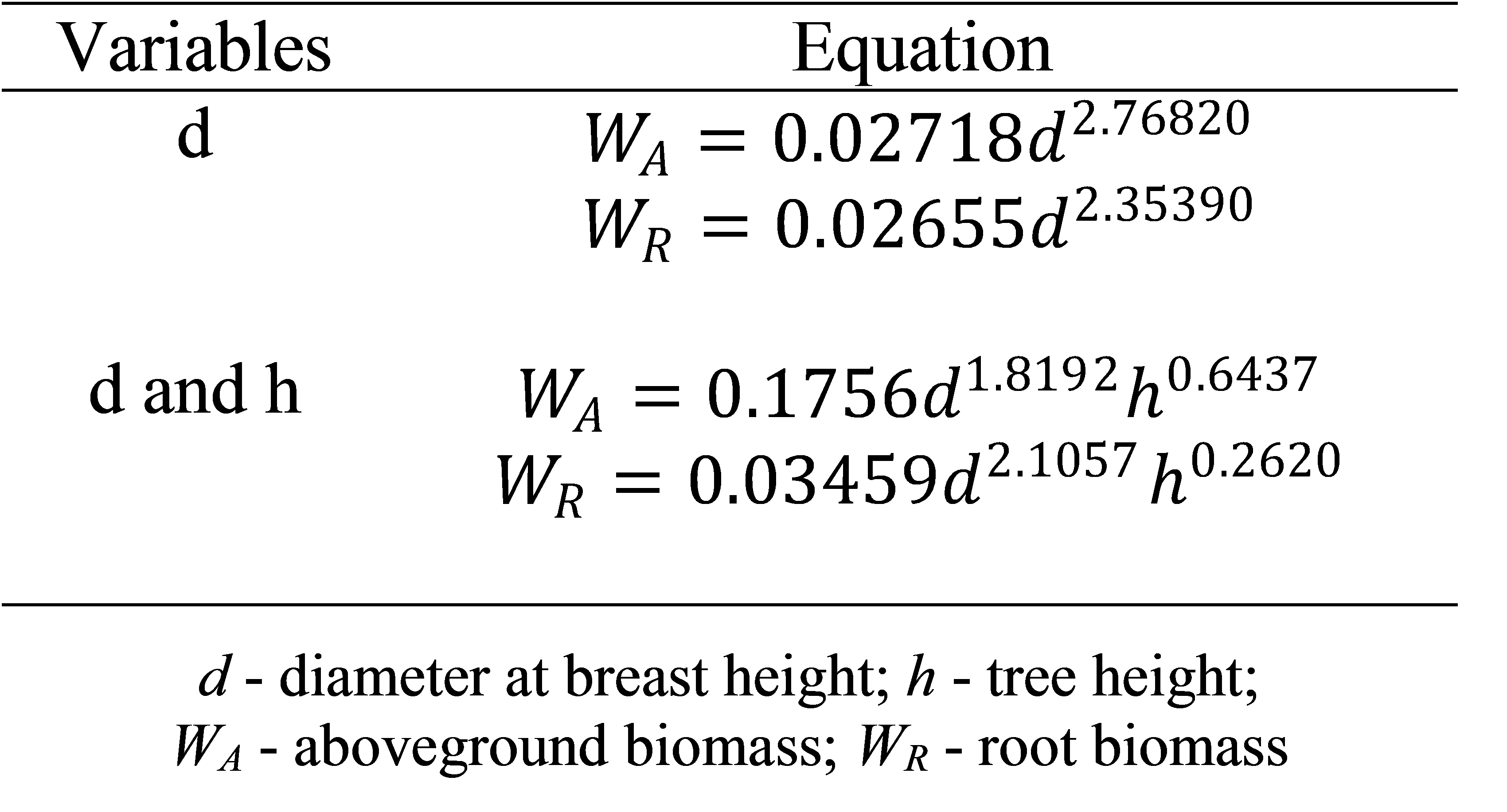
Allometric models establish relationships between tree morphological parameters and the respective biomass in its various components, allowing to make forest carbon estimates. In this sense, this study aims to develop models for the stone pine (Pinus pinea) gathering biomass information from sampled trees in Portugal, Spain, and Italy. These models use simple-to-measure tree variables (diameter at breast height – d, and total height - h) and are suitable for obtaining carbon estimates of aboveground biomass and roots in stone pines across the Mediterranean region.
Accurate estimates of tree biomass are strongly required for forest carbon budget quantifications and to understand ecosystem dynamics under a climate change scenario. Biomass allometric models for Mediterranean species are scarce, stand- and site-specific and therefore their scale of application is limited. A large dataset of harvested tree biomass, obtained from the species ecological and geographic Mediterranean distribution, can be used to develop improved biomass models to estimate above- and belowground biomass components of Pinus pinea.
The new developed Mediterranean system of biomass equations allows estimating aboveground biomass more accurately through a wide range of diameter classes and across different sites. The study also included a new and more precise belowground biomass model. The tree variables that best describe aboveground biomass variability are the d, h and h/d (the slenderness index). Models including only d or d + h do not differ greatly. Thus, the first approach may be considered for its simplicity, since height is often unavailable and it is more challenging to measure with the same precision as diameter.
An arbitrary choice of biomass models from the literature can lead to inaccurate estimates. This poses serious threats to the integrity of forest biomass estimates in the future. Due to its simplicity, the applicability of biomass models will continue to be widespread so care should be taken in interpreting and reporting results. It is important to examine the applicability of existing species-specific biomass to the data under evaluation. In that sense, and although the models developed have a broad application, care should be taken when using them outside the range of tree diameter classes from where they were developed, that is below 6 cm or above 73 cm diameter at breast height.
Increasing the collaboration opportunities among data owners and users can lead to significant improvements in the existing models and therefore provide more accurate and feasible biomass estimates and, in that sense, both research and end-users will win. An effort should be made to continue international collaborations in order to obtain more accurate biomass estimates for mature stands with high dimension trees. In the developed equations, biased estimates were obtained due the high variability in component biomass allocation of high dimension trees and their low representatively in the dataset.
In a changing environment, knowledge of leaf area, leaf nutrients, canopy biomass partitioning and cone production is especially important for stone pine, due its economic important in the Mediterranean region. Particularly, biomass modelling focusing on relating canopy morphological parameters especially the ones that can be traced by remote sensing tools, like satellites, airborne laser scanning and UAV-based digital aerial photogrammetry.
Alexandra Correia, alexandrac@isa.ulisboa.pt, https://alexandracorreia.wixsite.com/curriculum
Further information
This factsheet was developed with the collaboration of the authors of the following scientific article:
Correia, A.C., Faias, S.P., Ruiz-Peinado, R., Chianucci, F., Cutini, A., Fontes, L., Manetti, M.C., Montero, G., Soares, P., Tomé, M., 2018. Generalized biomass equations for Stone pine (Pinus pinea L.) across the Mediterranean basin. Forest Ecology and Management, 429: 425-436. https://doi.org/10.1016/j.foreco.2018.07.037
ACorreia

Allometric models for aboveground and roots biomass for Stone pine; ACorreia
